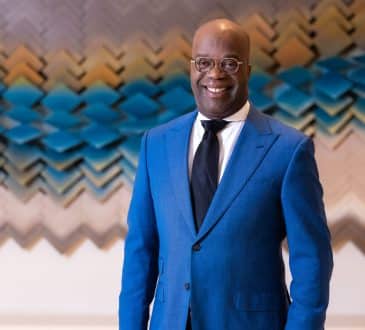The intimidating leader – how not to be a bully in the workplace

We’ve all heard the saying “it’s not what you say it’s how you say it”. It refers to someone who has upset or offended another person through how they’ve delivered a message. While the message itself might be helpful and relevant, the approach isn’t appropriate and creates an unintended reaction.
As leaders, how we deliver a well-intended message can often be the difference between intimidation and inspiration. A leader who intimidates is often in a hurry to achieve an outcome and feeling frustrated by the lack of control they have over their people. In contrast, a leader who inspires is more relaxed in their approach and open to doing things differently – they see the benefits of empowering their people and encouraging a learning environment. A leader who inspires will deliver better results over a longer period, where a leader who intimidates will only see short term success.
Becoming a leader who inspires, rather than intimidates, requires awareness, primarily of yourself but also of the people you’re communicating with. Laura Wilcox, director of management programs at Harvard University, says “if you don’t understand your own motivations and behaviours, it’s nearly impossible to develop an understanding of others.” And, when we fail to understand others we increase the risk of being perceived as a the ‘bully’ in the workplace.
It was low awareness that created the most significant challenges I faced in my leadership journey, including, the lowest, most embarrassing and shameful point in my career – receiving a written warning for bullying and intimidation.
I was about three years into my leadership journey and new to a team that didn’t want me there. What I believed success looked like was different to theirs, I had a clear idea on what was needed to achieve the required results and so approached it the only way I knew how…with directness and force. I was confident with my messages and direct in my delivery. There was no room for negotiation, you were either with me or you were against me. I was abrupt with feedback and when staff did anything to detract from achieving results, I would take it personally.
On reflection I can see I was overworked, under supported and doing absolutely the best I could with the resources I had at the time. The written warning was exactly what I needed to stop and take a look at the role I was playing, not just as a leader but across all areas of my life. It was catalyst to develop awareness of myself and of others.
The areas I focused on to be less intimidating and more inspiring were:
- Increasing my self-awareness – I would imagine I was a fly on the wall and replay conversations from a difference perspective. I would consider what the other person saw and heard and how they may have perceived the interaction. I kept a journal of all the emotions I felt throughout the day and started to notice what was triggering negative emotions (e.g. frustration, impatience, etc).
- Practice mindfulness – I learnt to be fully present in conversations by creating a daily mindfulness ritual. I would sit for five minutes and ask myself: what five things do you see; four things do you feel; three things do you hear; two things do you smell; and, one thing do you taste. Eckhart Tolle says “unease, anxiety, tension, stress, worry – all forms of fear – are caused by too much future, and not enough presence. Guilt, regret, resentment, grievances, sadness, bitterness, and all forms of non-forgiveness are caused by too much past, and not enough presence.” So now, any time I feel these emotions I practice mindfulness.
- Approach all situations with kindness and compassion – I accepted that everyone is doing the best they can with the resources they have right at this point in their life, including me.
- Swap judgement with curiosity – every time I judged another person because of what they said or did I would ask myself – ‘what else might be going on for them?’. I learnt to become curious and ask more questions to help me consider a different perspective.
- Let go of right & wrong and become ok with different – I learnt that we all see things from different perspectives and in most cases there’s more than one right way. This allowed me to let go of control and focus more on empowering others.
The road from intimidator to inspirer was long and incredibly uncomfortable but I made it and I’m a better person and leader because of it. I learnt that leading people and managing people are very different and while I had the management side of things down pat, I still continue to learn about leadership.
My biggest lesson is this…there are many ways to achieve success but being a bully isn’t one of them!
Written by: Shelley Flett.
Have you read?
# 5 things not to do when preparing for a university entrance.
# Interesting Things You Should Know About The Indian Institutes of Technology (IITs) In India.
# 5 Tips To Keep In Mind For Viewing Cherry Blossom (Sakura) In Japan.
# 8 Facts About Higher Education In China You Should Know.
# Fashion Icon: 15 Facts About Vogue’s Anna Wintour You Should Know.
Add CEOWORLD magazine to your Google News feed.
Follow CEOWORLD magazine headlines on: Google News, LinkedIn, Twitter, and Facebook.
This report/news/ranking/statistics has been prepared only for general guidance on matters of interest and does not constitute professional advice. You should not act upon the information contained in this publication without obtaining specific professional advice. No representation or warranty (express or implied) is given as to the accuracy or completeness of the information contained in this publication, and, to the extent permitted by law, CEOWORLD magazine does not accept or assume any liability, responsibility or duty of care for any consequences of you or anyone else acting, or refraining to act, in reliance on the information contained in this publication or for any decision based on it.
Copyright 2024 The CEOWORLD magazine. All rights reserved. This material (and any extract from it) must not be copied, redistributed or placed on any website, without CEOWORLD magazine' prior written consent. For media queries, please contact: info@ceoworld.biz
SUBSCRIBE NEWSLETTER








